Roman Architectural Capriccio
Oil on glass, cm 52 x 67 without frame; 63,5 x 79 cm with frame
The valuable painting, attributed to the painter Francesco Chiarottini and made of oil on glass, represents an architectural whim, or an architectural fantasy obtained by putting together buildings, archaeological ruins and other architectural elements in imaginary combinations and with unreal but plausible elements. In the work proposed here it is possible to distinguish several ancient monuments existing in Rome. On the right, in the second floor, you can see the Temple of San Pietro in Montorio, while on the opposite side, an arch of triumph, repeated in the distance, seems to be inspired by the Arch of Constantine. Behind the most distant arch is clearly identifiable the Colosseum. In the centre there is an imposing obelisk, also close to the many that stand out in the great Roman squares.
All around many other buildings of classic taste, ruins of Roman temples, a large porphyry tank, a temple with an imperial sarcophagus supported by telamons, staircases and Renaissance buildings are freely inspired by the architecture present in the eternal city. Among the buildings and the ruins several characters animate the composition: they are depicted, some sitting others standing, intent on walking and talking to each other.
The painter uses an unusual and very complex technique, namely painting on glass, which requires unusual artistic skills. The execution must in fact provide as a first draft the highlights and details in the foreground and then proceed in the realization of the parts in the background and then the backgrounds. The artist must therefore paint with an inverse process to the one most commonly used for an oil on canvas. The first works in painting on glass date back to the end of the seventeenth century; they spread, throughout the eighteenth century, especially in the refined commissions of the Venetian and Neapolitan area. The subjects depicted were often drawn, as reference models, from prints and engravings that could circulate easily.
The work object of this study is clearly inspired by an engraving taken from a work, probably a drawing, by Giuseppe Galli Bibiena.
The print of the engraving appears to mirror the image of our painting. Then when it was realized the engraver where to possess a drawing or a painting superimposable to our work. The same image to which our author therefore looked, similar to one of the many drawings that have survived, of which a significant example is reported.
There is another oil painting in glass, also attributed to Francesco Chiarottini and depicting architectural capriccio with the Monument of the Four Moors in Livorno, the Pantheon and other classical and modern buildings. The measurements of the two works are the same.
It is therefore likely that they were born in pairs or perhaps accompanied by other works.
The second work is also certainly inspired by an etching by Giuseppe Galli Bibiena, entitled Templi e Regia.
Galli da Bibbiena or Bibiena were a family of artists, originally from Bibbiena, now in the province of Arezzo, active in the artistic field for over 150 years, first at the local level and then on a European scale. Its components dealt with painting, architecture and scenography and were in great demand at the courts of half of Europe.
Giuseppe Galli da Bibiena (Parma, January 5, 1696, 1757), second son of Ferdinando Galli da Bibiena, came to equal the fame of his father and became the best known among the Bibbiena of his generation. Giuseppe leaves a copious collection of drawings and engravings of his own works. One of the most important collections of his drawings-studio is published by him in Rome, under the direction of Andrea Pfeffel in 1740-44, with the title Architectures and Perspectives dedicated to the Majesty of Charles the Sixth Emperor of the Romans by Giuseppe Galli Bibiena, his first theatrical engineer and architect, inventor of the same.
The prints of the engravings of Bibiena had different luck. Among the many artists who welcomed their lesson, drawing inspiration for the layout and the subjects of their works there is Francesco Chiarottini (1748 - 1796). The constant use of engraving for iconographic proposals and as an aid layout was essential for Chiarottini in his specialization in perspective painting and in the world of scenography.
Francesco Chiarottini was born in Cividale del Friuli, in Italy, on 29 January 1748 to Giobatta and Domenica Dini. In 1760 he moved to Venice to perfect his pictorial vocation. He remained in the lagoon city until 1773 and became a pupil of Guarana, Maggiotto, Fossati and Giandomenico Tiepolo. After a short stay in Udine where he learns with Giuseppe Morelli the fresco technique, for which he will specialize, he goes to Bologna, coming in contact with the scenic ways of Bibbiena, then to Florence, Naples and Rome (1780-82) where he meets the exponents of neoclassicism, including Antonio Canova.
In 1782 he returned to his native land with a more mature language that linked to the lesson of Tiepolo scenographic stimuli and preliminaries 'rovinistici" on the example of Bibbiena, Panini and Piranesi. It operates in Gorizia, Trieste and Cividale: here it frescoed the staircase and the rooms of the Palazzo Pontotti, today Brosadola. These works reveal a new inventive freedom, enhanced by the domination of spaces and by the perfect harmony of the figures with the environment. In 1786 the Accademia di Belle Arti of Florence appointed him professor honoris causa and the following year he was received at the Accademia Clementina of Bologna. Later, Chiarottini painted theatrical scenes, first in Bologna and then in Rome. Around 1791 he fell ill and began to give the first signs of insanity, which forced him to retire in his Cividale where he died on April 14, 1796.
The noble attempt to reconcile the demands of decorative painting, of eighteenth-century extraction, with the neoclassical creed, nourished by Hellenistic solicitations and archaeological nostalgia, is a common characteristic of his works. In some there is a roving accent closer to the lesson of Panini or Piranesi, while in other works the scenographic aspect and the neoclassical projection, close to the Galli of Bibiena, are more pronounced.
The work object of this study and its pendant, can be attributed to Franceso Chiarottini; as seen, the author uses Bibiena to propose an architectural scenario whose parts were repeatedly investigated by him and proposals.
We apologize for any errors in translation from Italian. Please click on the word EXPERTISE to read the expertise in Italian.


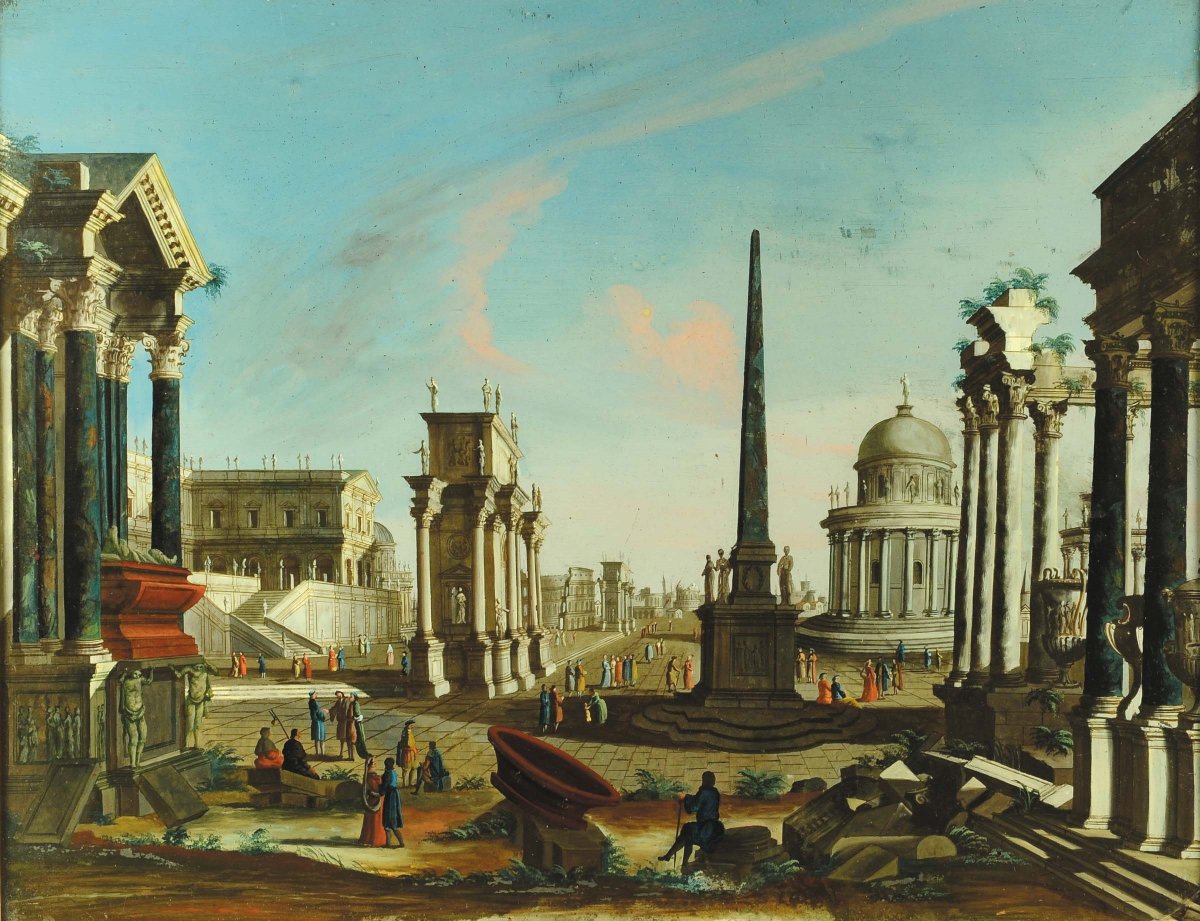

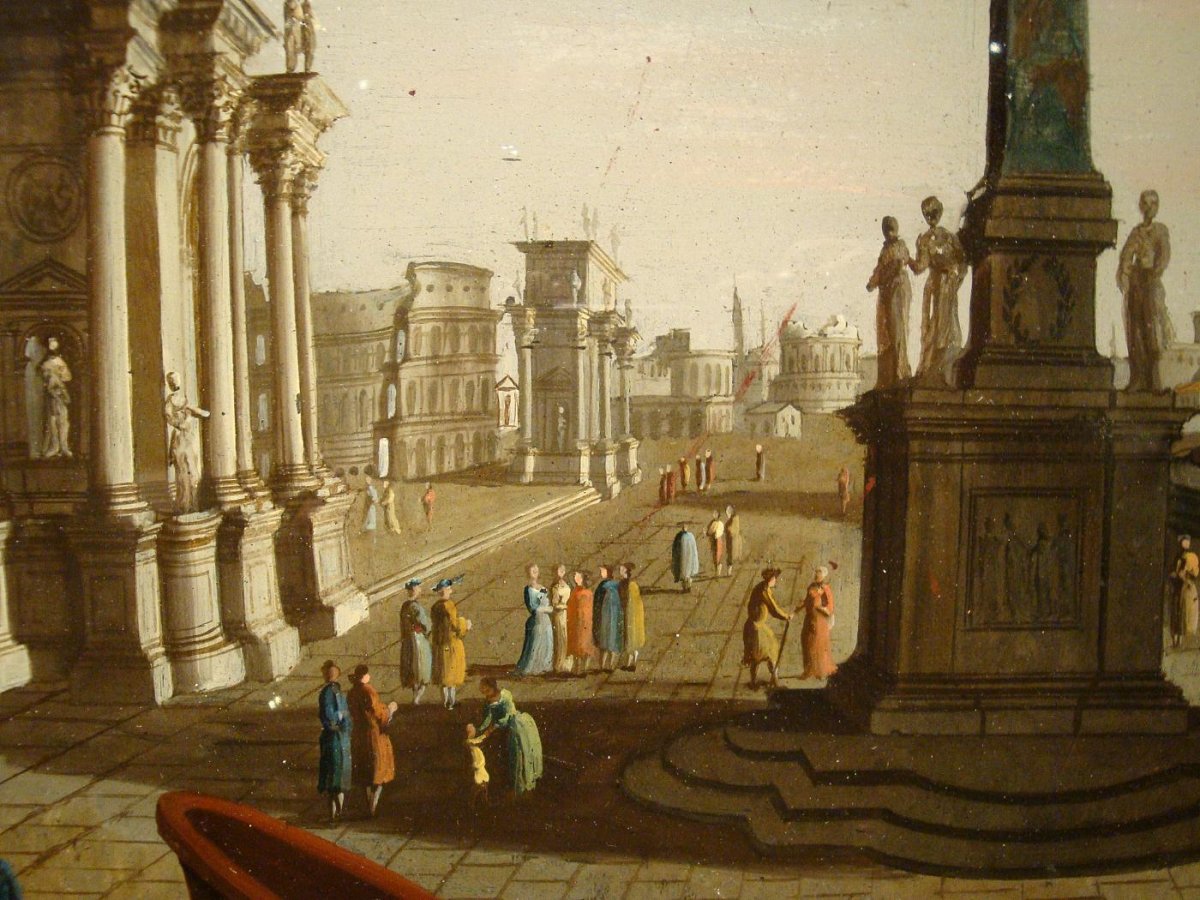
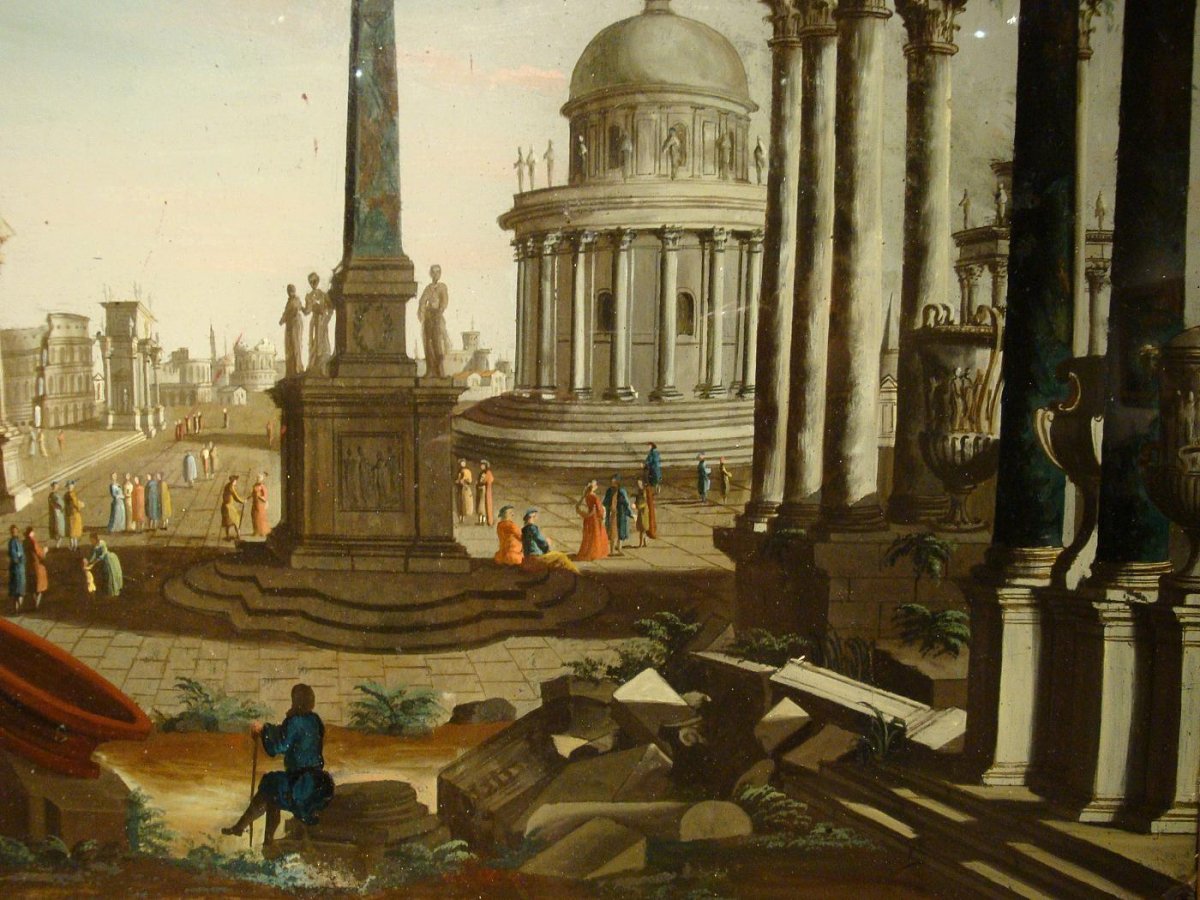
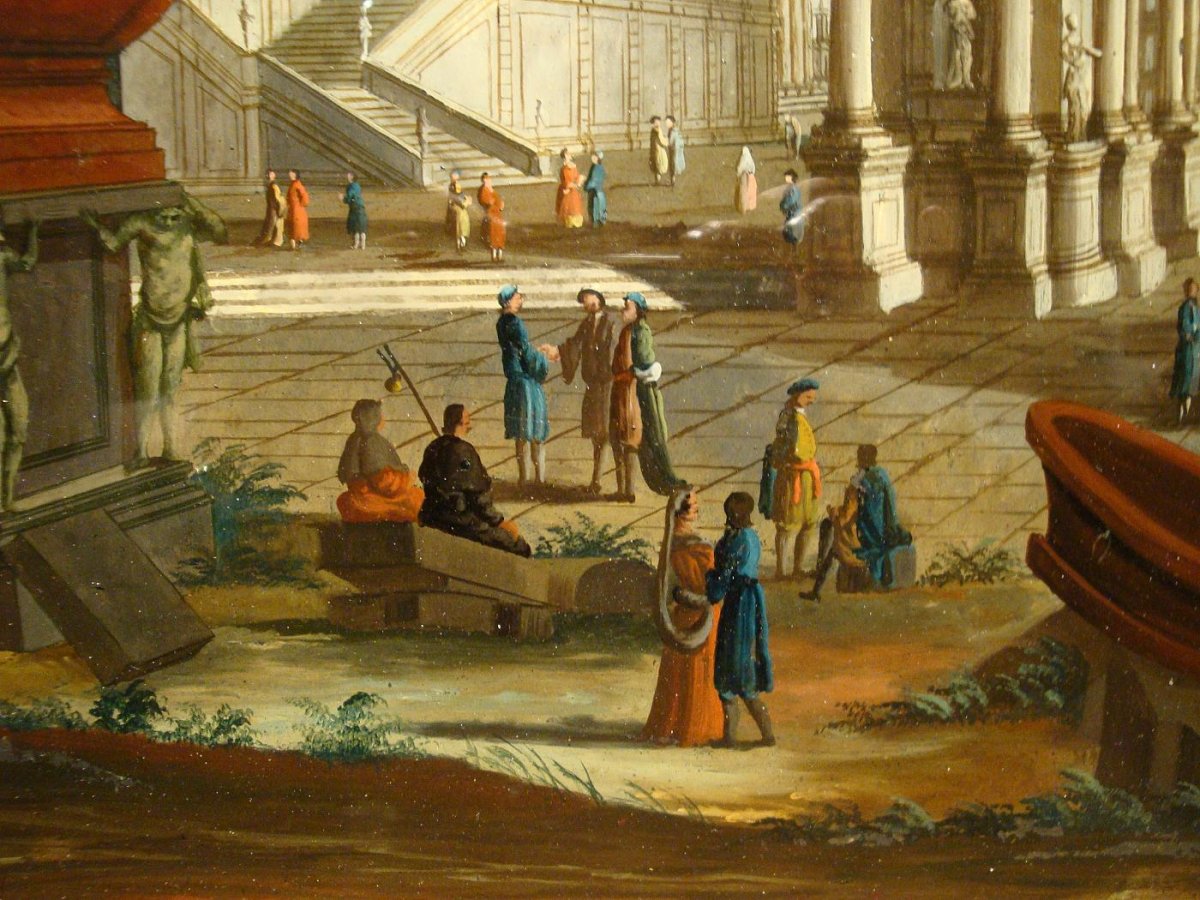

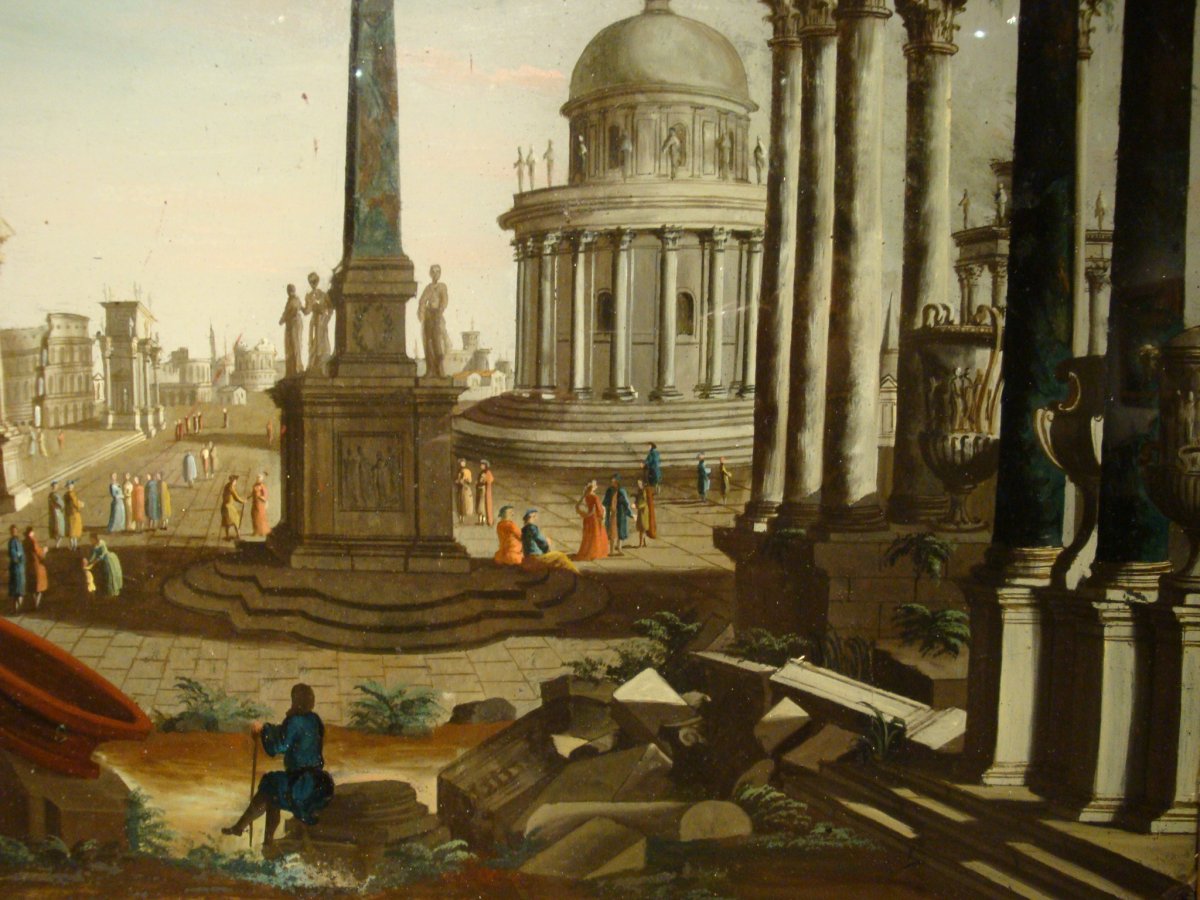
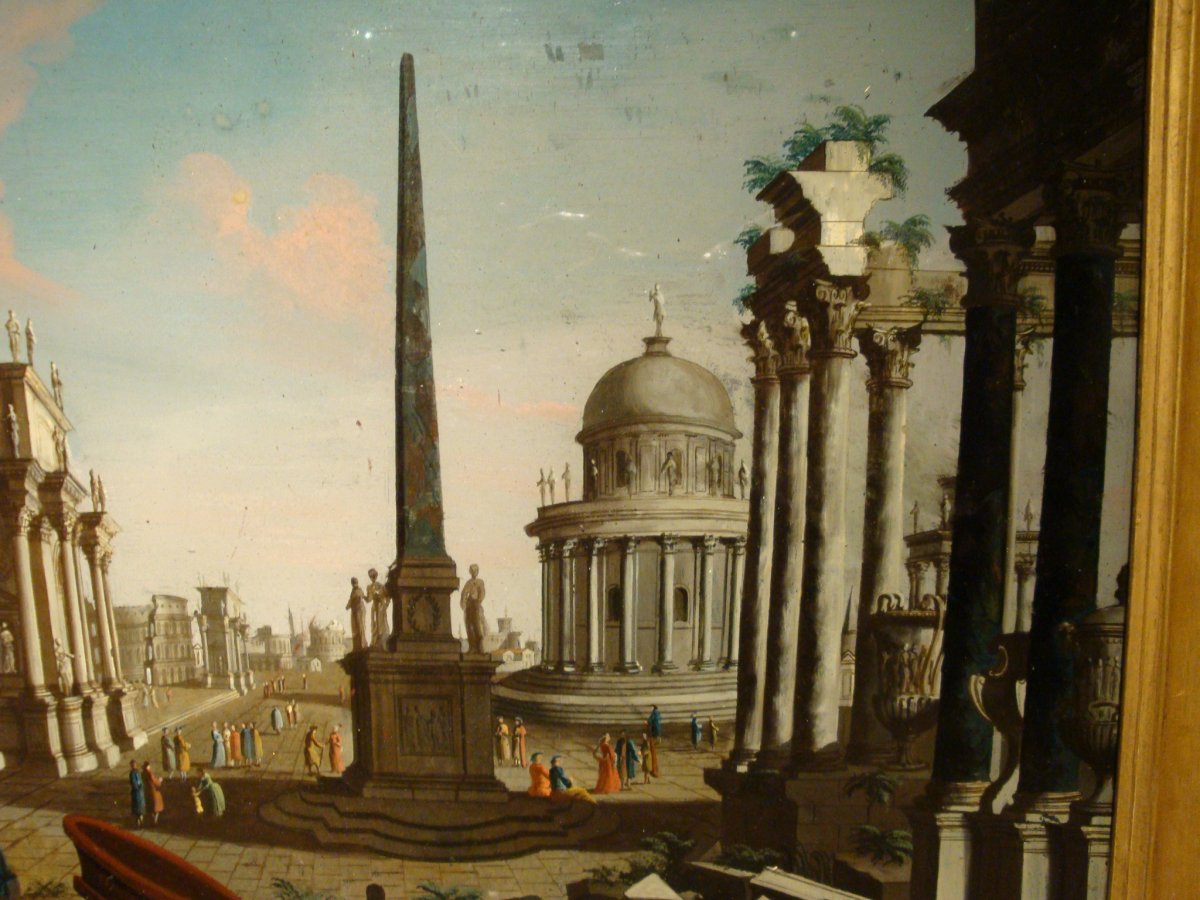
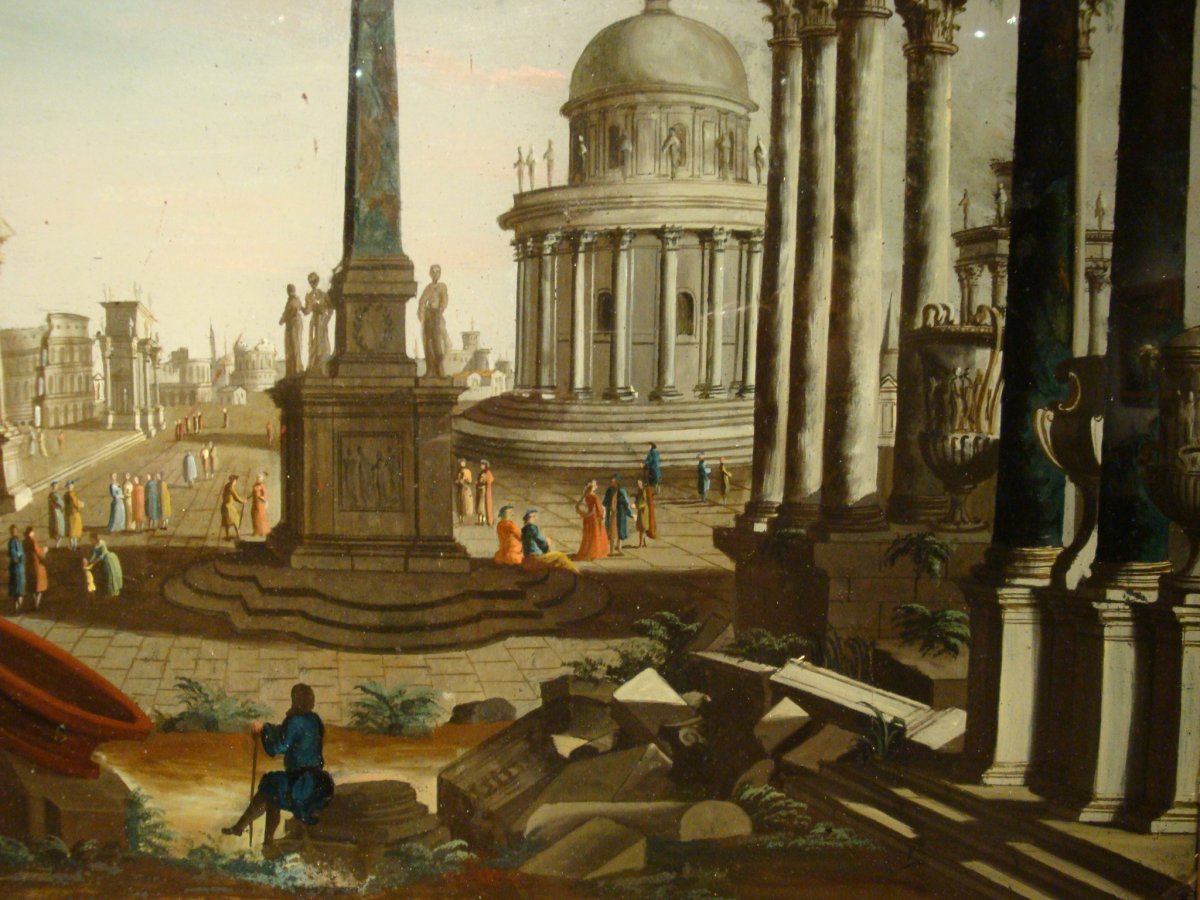
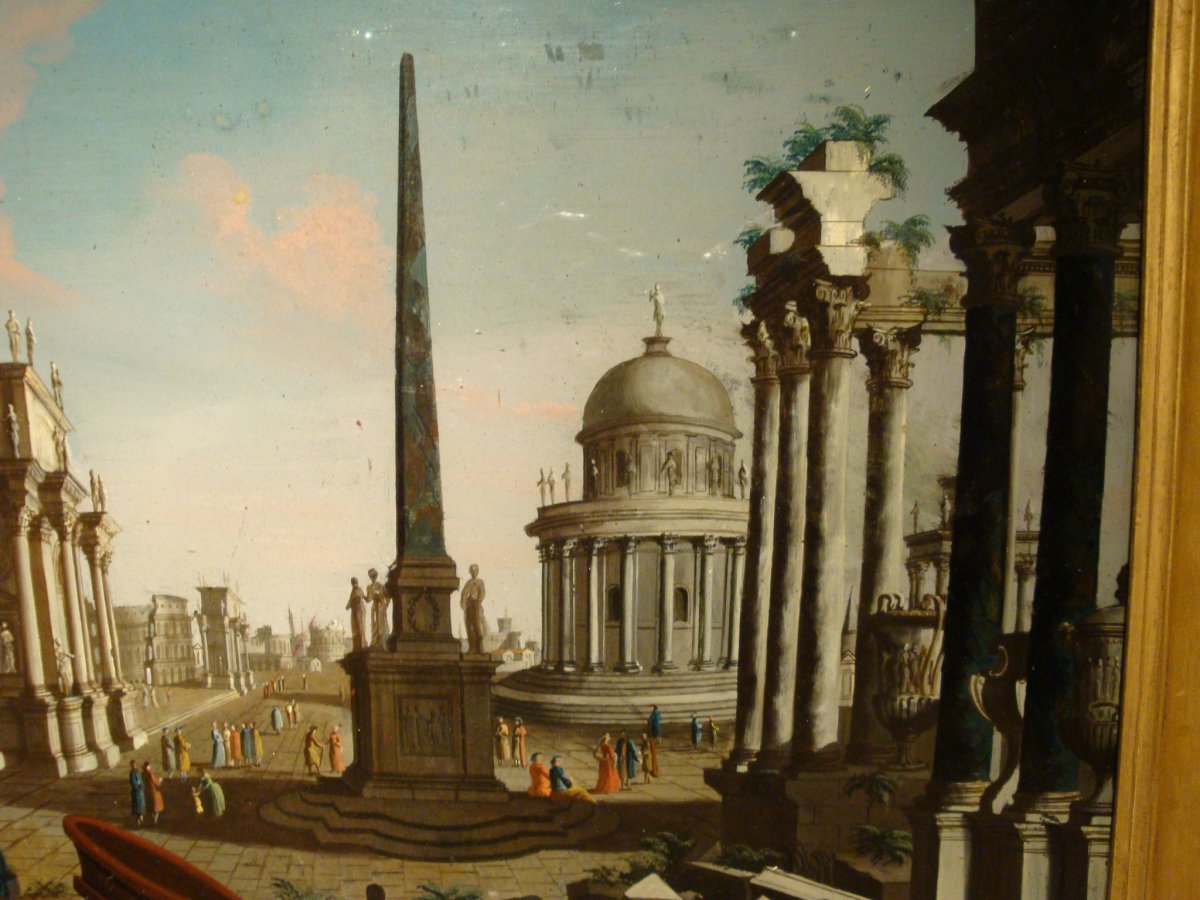

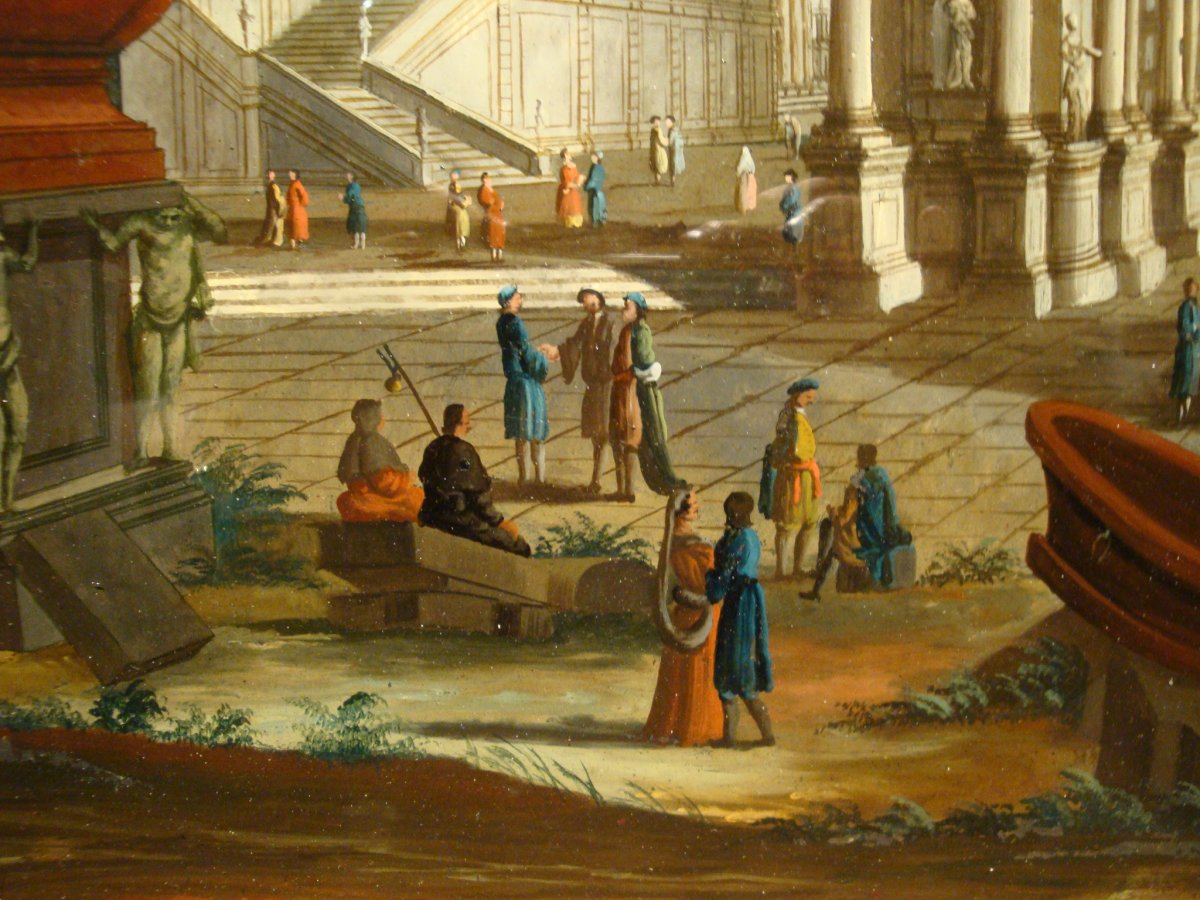

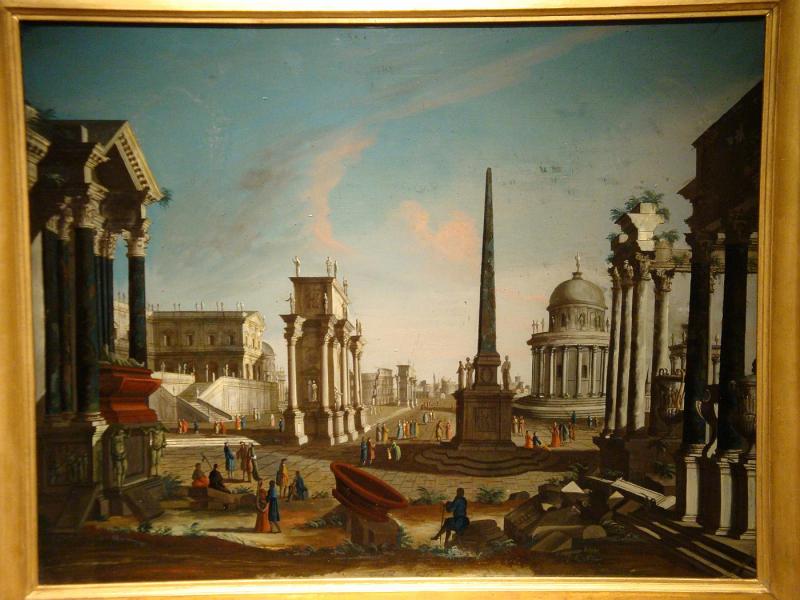



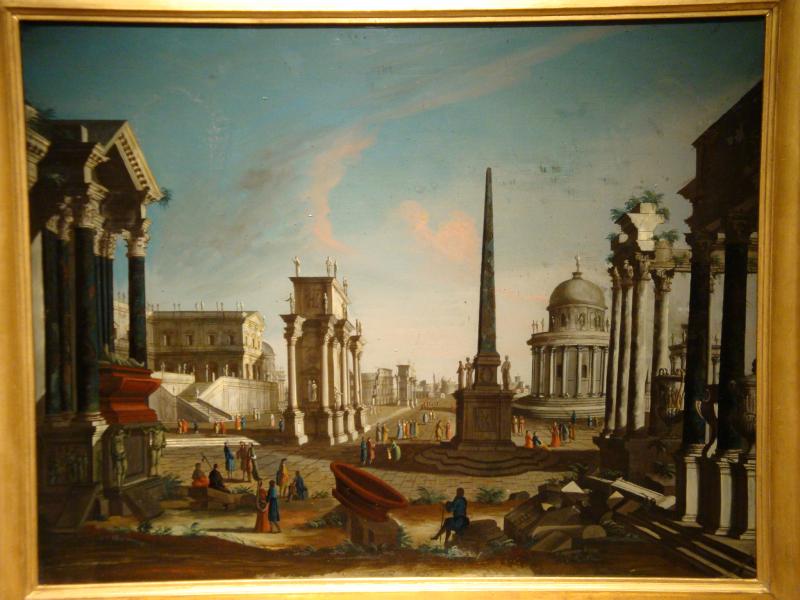




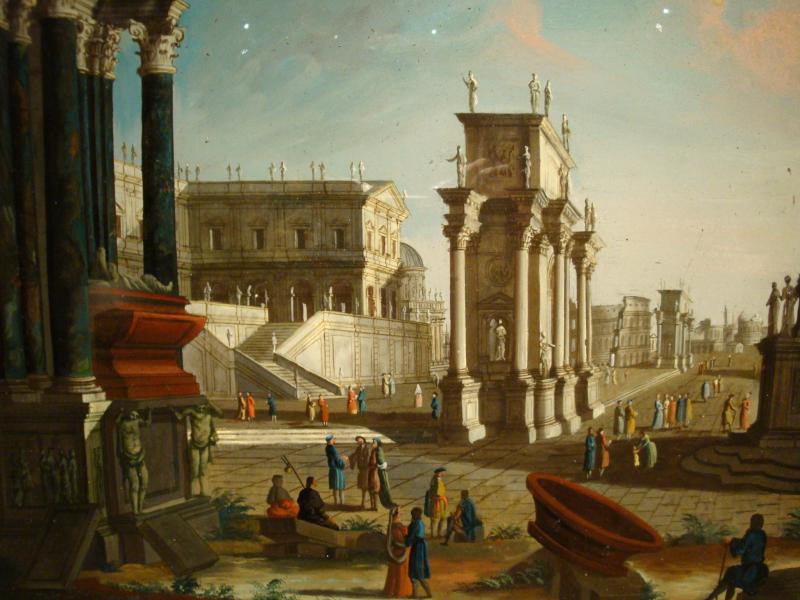










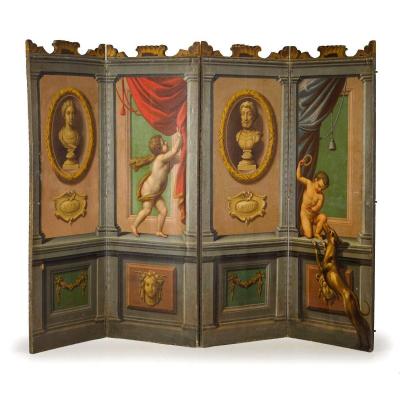

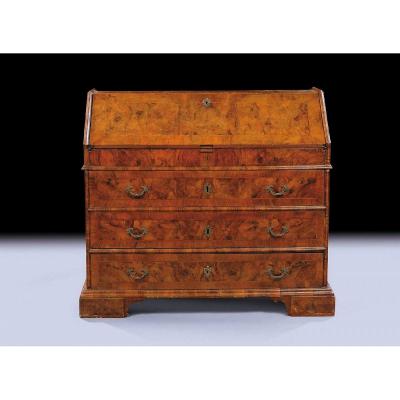

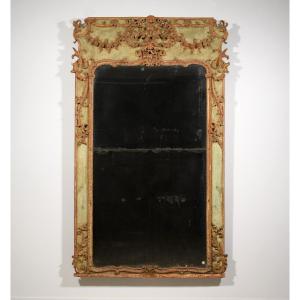
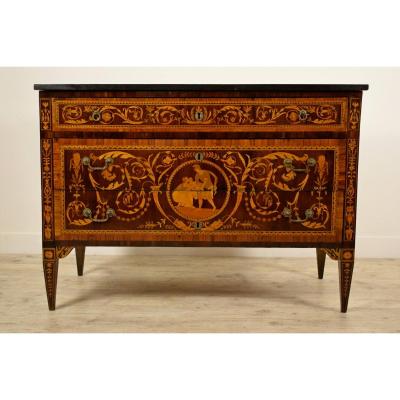

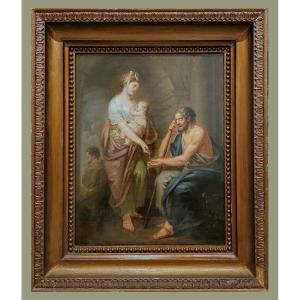


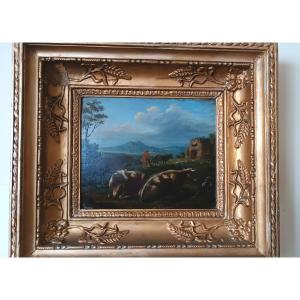




 Le Magazine de PROANTIC
Le Magazine de PROANTIC TRÉSORS Magazine
TRÉSORS Magazine Rivista Artiquariato
Rivista Artiquariato